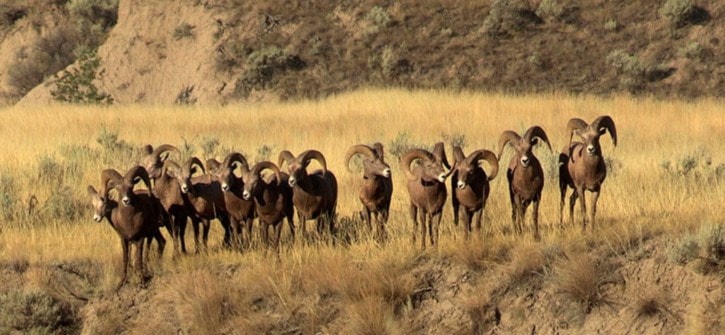When Williams Lake filmmaker Robert Moberg set out to create his film Bighorns in the Junction he didn’t realize it would become such a personal story.
“It started out being about why the sheep are disappearing. I have interviews with top researchers in the field of bighorn sheep disease, but the film also has a philosophical element,” Moberg said. “It’s about getting your kids out into nature and why we need the wilderness.”
The 90-minute-film will premiere in Williams Lake on Friday, Feb. 20 at the Cariboo Memorial Complex’s Gibraltar Room.
“I think it’s fitting to have the initial screening here,” Moberg said.
Moberg began formulating the film project in the fall of 2012.
He had just returned to the Cariboo after living in Edmonton.
“I was back visiting and went out to Farwell Canyon and Junction Sheep Provincial Park and really started thinking how stunning it was after coming from Edmonton,” he recalled.
After a good long hike, looking out over the canyon and grasslands, he was hooked and realized there must be a story.
He did some research and learned the iconic creature of that ecosystem had declined to almost unsustainable numbers, both in the Churn Creek area and at the Junction.
Moberg said a pneumonia virus that comes from domestic sheep is to blame for the decline, adding loss of habitat, poaching and lungworm disease are also impacting the numbers.
“The cool thing about our sheep here is that no one has translocated sheep into the Junction or Churn Creek,” Moberg said. “They are original blood lines from thousands of years ago.”
Researchers he met and interviewed from the U.S. call the Junction sheep the mother of all sheep herds because when populations were practically extricated in the 1950s, they transported some sheep from the Chilcotin.
“There is a bloodline of those sheep in Idaho and they are still there,” Moberg said. “We’re responsible for repopulating herds throughout the western U.S.”
Numbers, however, are higher in Canada and the U.S. than they’ve been in a long time, estimated to be at 60,000 or 70,000. At one time there were two million, Moberg said.
During the filming he learned the sheep have amazing eyesight and they protect their newborn lambs in the spring very tightly.
While camped one time at the Junction, hunkered down for two or three hours close to his tent, he was observing a group of yews and week-old lambs up on a grassy hill side.
They slowly emerged and came into view, but were still about 500 metres away, just at the edge of his zoom lens.
“The wind picked up and flapped my tent fly. That was it, they were gone.”
Local field naturalist Ordell Steen, photographer Chris Harris, Gord Sterrit from the Upper Fraser Conservation Alliance and some ranchers appear in the film.
Moberg said he also got nice shots of local petroglyphs depicting a bighorn sheep.
The film also explores the risks society continues to take with industry extracting resources, Moberg said.
At its conclusion the film contains footage from the Aug. 4, 2014 Mount Polley Mine disaster he shot the day of the breach that was seen widely on television news.
“It’s all about jobs, but what are the real costs? When you see Mount Polley crashing into Quesnel Lake, there’s the real cost.”
After the initial screening he said he’ll see where it goes. He’s hoping to show it at some festivals and said there are some TV possibilities.
Tickets are $15, available at the door. Cash only. Show time is 7 p.m.
